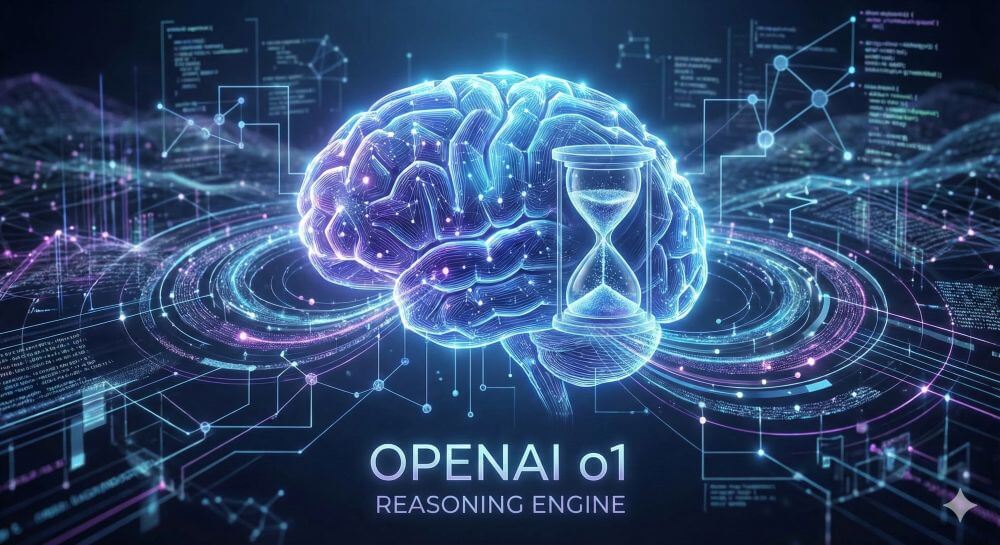AI labeling on social media: Obligations & help with errors
The lines between reality and digital fiction are becoming increasingly blurred. What seemed like science fiction just a few years ago—photorealistic images of events that never happened, or voice imitations of famous personalities—is now accessible to everyone thanks to tools like Midjourney, Sora, and ElevenLabs.
In response to this massive wave of synthetic media, the major social media giants have ushered in a new era: the introduction of mandatory labeling for AI-generated content. But what does this mean specifically for creators, companies, and the average user?
We aim to clarify this in our article.

The fight against disinformation and deepfakes
The introduction of these labels is not a purely altruistic measure by the platforms. It is a reaction to three major pressures:
The Trust Problem: Users increasingly feel deceived. When an influencer posts an AI-generated image without labeling it and sells it as a “real” experience, trust in the platform erodes.
The Super Election Year & Deepfakes: In times of global elections, the danger posed by political disinformation via deepfakes (manipulated videos/audio) is higher than ever before.
Regulation (EU AI Act): Legislators, particularly in the EU, are demanding stricter rules for the use of artificial intelligence. The platforms often preempt government intervention with their own rules.
The status quo: Who is introducing what?
Not all platforms are proceeding in exactly the same way, but the trend is clear. Here’s an overview of the measures being taken by the “big players”:
1. Meta (Instagram, Facebook & Threads)
The parent company, Meta, has announced one of the most aggressive strategies.
- “Made with AI” label: Meta is introducing visible indicators on posts that reveal if an image is photorealistic but was created with AI.
- Metadata scanning: Meta isn’t relying solely on user honesty. The system scans files for digital watermarks and metadata (based on C2PA standards) left behind by tools like Google DeepMind, Adobe Firefly, or DALL-E.
- Manual disclosure: Users must disclose when uploading photorealistic videos or audio created with AI.
2. TikTok
TikTok relies on a blend of technology and user responsibility.
- Automatic Labeling: TikTok was the first platform to automatically label content created with its own AI effects (“AI-generated”).
- Partnership: Through partnerships with the Coalition for Content Provenance and Authenticity (C2PA), TikTok plans to automatically detect and label content from third-party tools (such as external video generators).
- Deletion: Unlabeled, realistic AI-generated content can be rigorously deleted.
3. YouTube
YouTube focuses heavily on realistic simulations.
- Disclosure Obligation: Creators must check a new option during the upload process if their content contains “realistic-looking” material that was synthetically generated (e.g., a tornado that never happened or a speech that was never given).
- Visible Banners: For sensitive topics (health, elections), the label will be displayed more prominently directly in the video player.
What do creators and marketers need to do now?
The workflow is changing for content creators and social media managers. Ignorance is no excuse.
The checkbox must be ticked: Checkboxes or toggle switches (e.g., “This content is AI-generated”) are now almost always present during the upload process. Use them.
Risk of shadowbanning: Those who systematically fail to label their content risk not only having their post deleted. Algorithms could classify the account as “untrustworthy,” leading to drastic losses in reach (shadowbanning).
Don’t delete metadata: Many creators remove metadata to reduce file size. In the future, this could lead to platforms either rejecting the upload or incorrectly classifying it as “not AI,” only to penalize it later.
Wrongly accused? How creators are fighting back against “false positives”
With the introduction of automatic scanners, a new problem arises: the error rate of the recognition software. AI detectors are notorious for their imperfections. Heavily retouched photos, HDR images, digital hand-drawn artwork, or highly compressed images are often incorrectly labeled as “AI-generated” by the algorithms of platforms like Meta or TikTok.
For creators, this is a nightmare: their artwork is branded as computer-generated, and their artistic achievement is devalued. What can you do if your “Made by Human” content is mistakenly labeled “Made with AI”?
1. The Official Dispute Process
Most platforms offer an appeal process, though it’s often hidden.
Instagram/Facebook: If content has been automatically labeled, you will usually receive a notification. Look for options like “Request Review” or “Dispute Label.”
Important: React immediately. The longer the label persists, the more entrenched the impression will be in your audience’s mind.
2. “Keep the Receipts”: Secure Evidence
In the era of AI skepticism, documenting your creative process is your lifeline. Make the following routines a habit:
- Keep RAW files: Never delete your camera’s original RAW files. These contain unadulterated sensor data that AI cannot simulate.
- Don’t flatten layers: When working with digital art (Photoshop, Procreate), always save the working file with all layers. AI typically generates a finished image (a “flat image”), not a complex layered structure.
- Avoid metadata washing: Use tools that preserve EXIF data (camera model, exposure time) during export. If you send images via messengers like WhatsApp before uploading them, this data is often deleted – making it suspicious to algorithms.
3. The “Work in Progress” (WIP) as a Content Strategy
The most effective defense is offense. When algorithms fail, the community must be convinced.
- Timelapse Videos: Apps like Procreate automatically record the painting process. Post this video as “proof” on the second slide of a carousel.
- Screen Recordings: Briefly record your timeline in the editing program or the layers in Photoshop and post this in your story if any doubts arise.
Expert Tip: If Instagram persistently mislabels your image, try cropping it slightly or changing the file format (e.g., from PNG to JPG) to change the file’s hash value and then re-upload it.
Conclusion: A necessary step towards media literacy
Mandatory labeling of AI-generated content won’t solve the problem of disinformation overnight. However, it’s an essential tool for educating users about media literacy. We need to learn to critically examine online content again. For creators, this means more bureaucracy when uploading in the short term, but in the long run, it protects their credibility.
Those who want to remain authentic should understand the labels not as a stigmatization, but as a mark of quality and transparency.
Beliebte Beiträge
The Great Feast: Who will survive the streaming war?
The streaming market is imploding. Services like Paramount+ are fighting for survival, and Disney is posting billions in losses. Is a major wave of mergers imminent? What will happen to our content and subscriptions when the consolidation begins?
10 signs that it’s time for a new job!
Dissatisfied with your job? This article reveals 10 clear signs that a job change might be necessary. If the Sunday blues become chronic, you're no longer learning anything, or you lack appreciation, it's time to be honest with yourself. A guide to making your career decision.
Salary negotiation: 5 phrases that can get you up to 15% more
Want a 15% raise? A successful salary negotiation depends on preparation and the right words. We'll show you five phrases you need to use – from setting the anchor to responding to a "no." This is how you argue persuasively.
Die besten Live-Übersetzer-Earbuds im Check
Schluss mit Sprachbarrieren! Moderne Earbuds wie Google Pixel Buds & Timekettle übersetzen Gespräche live. Wir zeigen die besten Modelle, erklären die KI-Technik, nennen die Kosten und zeigen, wo die Technologie noch an ihre Grenzen stößt.
So sieht das wirklich perfekte Homeoffice-Setup für 2026 aus
Ihr Homeoffice ist veraltet? Steigern Sie 2026 Produktivität & Gesundheit. Unser Guide zeigt das perfekte Setup: von ergonomischen Stühlen und 4K-Webcams bis zu Mesh-WLAN und Kabelmanagement. So investieren Sie in Ihre Karriere.
Internet, Telefon & TV: Die besten Komplettpakete
Internet, TV & Telefon aus einer Hand? Wir vergleichen die Komplettpakete von Telekom, Vodafone, O2 & 1&1. Wer punktet bei Speed, TV-Komfort (MagentaTV vs. GigaTV) und Preis? So finden Sie das beste Triple-Play-Angebot für Ihre Adresse.

































